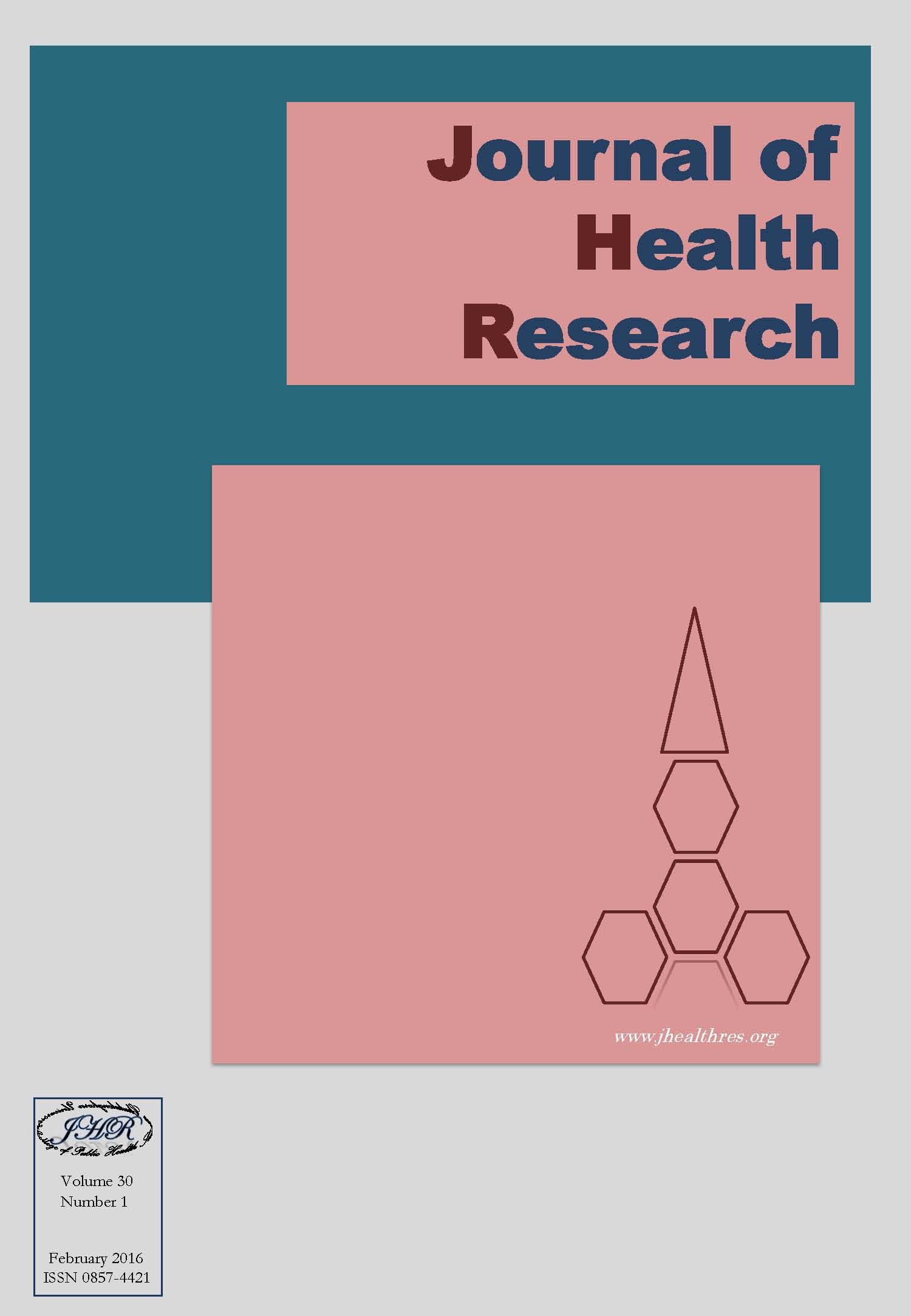Prevalence of Carriers of Thalassemia and Hemoglobinopathies in Ethnic Groups’ Pregnant Women and Spouses at the Antenatal Clinic Mae Fah Luang Hospital, Chiang Rai (2552 – 2556 B.E.)
Keywords:
Thalassemia, Hemoglobinopathies, Ethnic groups, Pregnant women, ThailandAbstract
Background: Thalassemia is globally the most widespread genetic disease commonly found in Thailand causing chronic anemia in humans. It is caused by a genetic defect that leads to abnormal or no globin chain synthesis in the hemoglobin molecule. However, survey for prevalence of these disorders has never been conducted in ethnic groups at Mae Fah Luang District, Chiang Rai, Thailand.
Methods: A retrospective descriptive study aimed to determine the prevalence of carriers of thalassemia and hemoglobinopathies in ethnic groups’ pregnant women and their spouses who attended in 1st antenatal clinic during 1st January 2552 to 31st December 2556 B.E. at Mae Fah Luang Hospital, Mae Fah Luang District, Chiang Rai Province, Thailand. There were 2,731 pregnant women and 370 spouses recruited into the study. Secondary data of sex, age, races, One-tube osmotic fragility test (OFT), Dichlorophenol indophenol precipitation (DCIP), Mean corpuscular volume (MCV) and Hemoglobin (Hb) typing were analyzed by descriptive statistics.
Results: The prevalence of carriers of thalassemia and hemoglobinopathies among ethnic pregnant women to be 37.5%, their spouses 28.7% and the overall prevalence was estimated to be 33.1%. Hemoglobin E trait was predominantly observed in both pregnant women (15%) and spouses (12.5%). However, considerable amount of samples were not identified in this study and they could be of other types of thalassemia/hemoglobinopathies. The Shan/Tai-Yai ethnic group had the highest prevalence of thalassemia and hemoglobinopathies (19.3%) whilst the lowest prevalence was among Haw/Chinese Yunnan (1.2%).
Conclusion: The prevalence of thalassemia and hemoglobinopathies in ethnic groups of Mae Fah Luang District was considerably high among ethnic groups. Therefore, it is important to establish the thalassemia screening program in pregnant women and spouses with the aim to prevent and control this disease in ethnic groups in Mae Fah Luang District.






